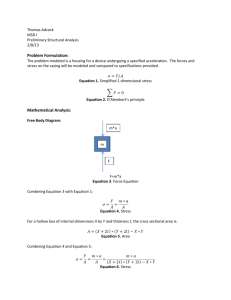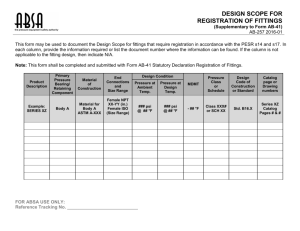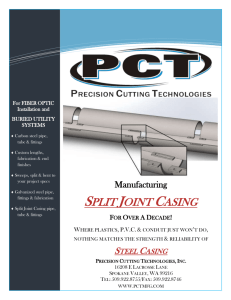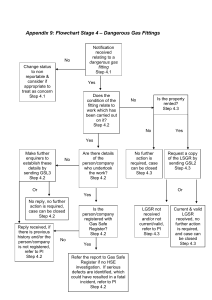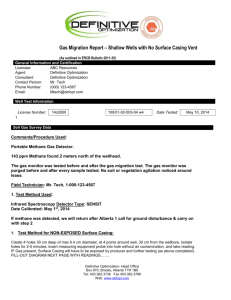Double Spline-Lock Fittings
advertisement
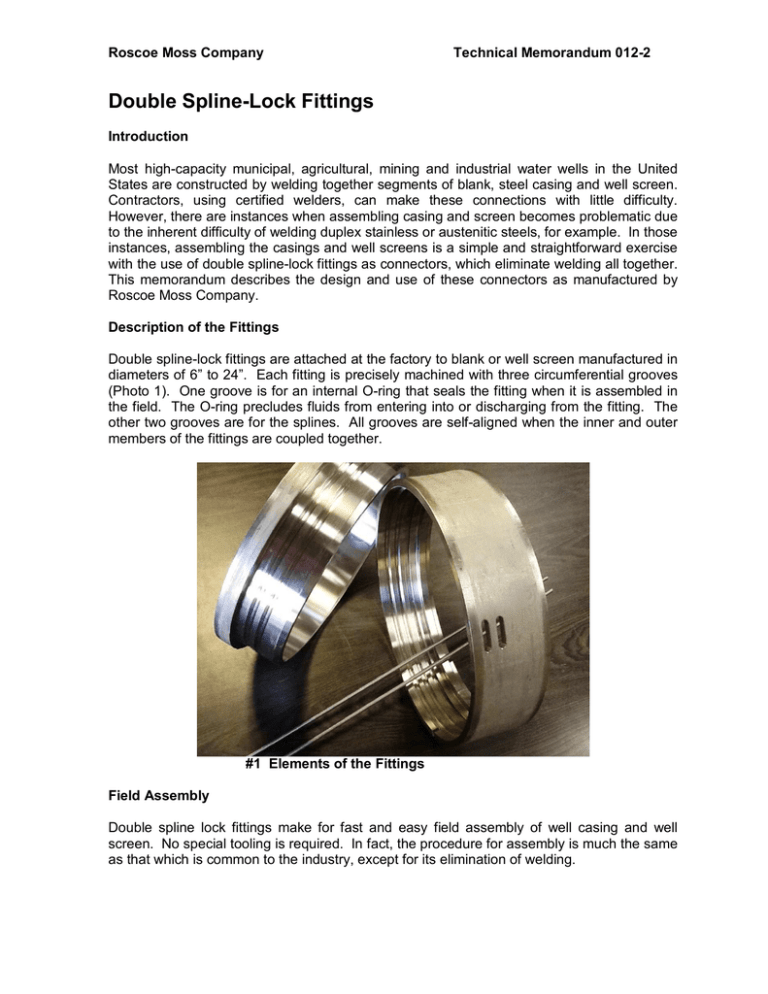
Roscoe Moss Company Technical Memorandum 012-2 Double Spline-Lock Fittings Introduction Most high-capacity municipal, agricultural, mining and industrial water wells in the United States are constructed by welding together segments of blank, steel casing and well screen. Contractors, using certified welders, can make these connections with little difficulty. However, there are instances when assembling casing and screen becomes problematic due to the inherent difficulty of welding duplex stainless or austenitic steels, for example. In those instances, assembling the casings and well screens is a simple and straightforward exercise with the use of double spline-lock fittings as connectors, which eliminate welding all together. This memorandum describes the design and use of these connectors as manufactured by Roscoe Moss Company. Description of the Fittings Double spline-lock fittings are attached at the factory to blank or well screen manufactured in diameters of 6” to 24”. Each fitting is precisely machined with three circumferential grooves (Photo 1). One groove is for an internal O-ring that seals the fitting when it is assembled in the field. The O-ring precludes fluids from entering into or discharging from the fitting. The other two grooves are for the splines. All grooves are self-aligned when the inner and outer members of the fittings are coupled together. #1 Elements of the Fittings Field Assembly Double spline lock fittings make for fast and easy field assembly of well casing and well screen. No special tooling is required. In fact, the procedure for assembly is much the same as that which is common to the industry, except for its elimination of welding. Roscoe Moss Company Technical Memorandum 012-2 To join two segments of casing or screen, a rig operator simply picks up a segment of casing (or screen) with the elevators and raises it into position above the borehole. (This description assumes that a segment of casing (or screen) has already been lowered into the borehole and is held in suspension with a casing clamp at the working level ready to receive the other half of the fitting.) Before lowering the casing or screen segment both ends are cleaned with a rag to remove debris and/or dirt; then an O-ring is lubricated and placed within the bottom groove of the female-end of the fitting (Photos 2 and 3). The operator then carefully lowers the segment in the elevators so that its male-end fitting enters the female-end of the fitting held at the rig floor (Photo 4). This is essentially the same procedure that is used to join casing and screen segments with welding collars, as manufactured by Roscoe Moss Company. When the two elements of the fitting are about to be joined a small steel tab on the upper end fitting must be guided into a factory-cut groove on the bottom fitting. This feature prevents rotational movement of the connection in case it is subjected to torque. The connection is completed by inserting by hand a pre-cut, flexible, stainless steel spline into each of the two circumferential grooves (Photo 5). The splines slide in easily with little or no resistance. If required, the tip of the spline can be lubricated for ease of installation. When the two splines are fully inserted, the ends may be trimmed to leave a tail about 1 inch (2.5 cm) long. If so desired, a piece of duct tape can be placed over the spline tails to keep them from coming in contact with the side of the borehole as the casing and screen are lowered into position below ground. A video showing the assembly procedure for a recently constructed well can be viewed at: http://www.youtube.com/user/RoscoeMossCompany The Realities of Welding for Well Construction Qualified Welders. In the U.S., well construction specifications commonly require that contractors provide welders who are experienced and certified. Welders must have the requisite skills and experience to work with different types of steel (e.g., duplex stainless and others) and projects. In developing countries, skilled welders are in short supply or nonexistent; welders are not certified and may not be experienced. As such, they would be totally unqualified to attempt to weld duplex stainless steel. By specifying double spline-lock fittings for duplex (or any) steel, there is no need for welding. With or Without Threaded Ends. Outside the U.S., some contractors build wells with threaded casing and well screen, which is a viable option for small-diameter wells. However, working with large diameter threaded casing and well screen is extremely difficult for all but the most experienced and well equipped contractors. High-capacity wells require large diameter casings and screen which are not easily connected with treaded ends. Double spline-lock fittings are viable options for both small and large diameter wells. Pulling Casing and Screen. Borehole stability is a major concern no matter what type of drilling method is employed. There is almost always the possibility to encounter squeezing formations, slumping, or borehole collapse. If any of these conditions occur during the installation of casing and well screen it may be necessary to pull out all of the casing and screen and re-drill the borehole. If the casing and screen segments were welded together, then the couplings or butt-ends would have to be repaired. In the case of duplex and austenitic steels, such repairs would have to be made at the factory. This could easily lead to a protracted delay of many weeks and would be unavoidable. 2 Roscoe Moss Company Technical Memorandum 012-2 In the scenario above, if the connections were made with double spline-lock fittings, the removal would be accomplished by pulling out each segment of pipe, removing the splines, and laying down the casing and screen. Then, when the borehole is re-drilled, the casing and screen could be reinstalled by repeating the standard installation procedure. This type of pull-and-reinstall procedure was successfully accomplished at project in Chile, much to the relief of the owner and contractor. When Welding is Prohibited. In rare instances, such as in underground mining, welding would be strictly prohibited due to the potential for ignition and explosion. Double spline-lock fittings are perfectly suited to meet the needs for this specialized application to meet the strict requirements set forth for health and safety. Decreased Installation Time. Double spline-lock fittings expedite construction for the installation of well casing and screen. As shown in the referenced video, each connection is made quickly and efficiently with a minimum of effort. The contractor shown in the video made about 10 connections per hour. Welding each connection would take about 20 to 30 minutes (or more). Expediting the installation of casing and screen will reduce the rig time and complete the well more quickly. Photos #2 O-ring is placed in bottom groove #3 O-ring is seated in groove #4 Male and female ends are joined #5 Splines are slid into grooves 3 Roscoe Moss Company Technical Memorandum 012-2 Summary Double spline-lock fittings can be used to connect any type of steel. Although this memorandum specifically refers to duplex and austenitic steels, these fittings are also available in mild steel, copper-bearing steel, and high strength low alloy steel. The fittings require neither special installation tools nor training to use them successfully. Double splinelock fittings speed up installation time. They also make it possible to quickly remove and replace casing and screen in the event that should be necessary. About the Author Robert Turnbull is the Chief Hydrogeologist of Roscoe Moss Company. In this capacity he provides technical support, as needed, to consultants, municipalities, and water districts to plan and design water supply wells. He can be contacted for such information or to answer inquires regarding this technical memorandum via email at rturnbull@roscoemoss.com. His website is www.blthydro.com. The website for Roscoe Moss Company is www.roscoemoss.com. 4
